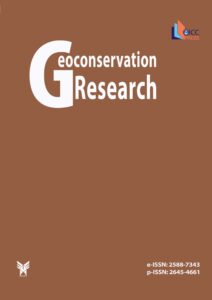Original Article
An Introduction to Mining Tourism Route in Yazd Province
Authors
Abstract
Nowadays, mining tourism is known as a strategy for local development and an alternative economy in remote areas. Yazd province is Iran’s mineral hub and has a high potential for promoting mining tourism. However, this form of tourism in the province has not been considered as it should. This paper emphasizes on recognizing the mining tourism routes in Yazd province. Field trip and observation method were used in this research, and the results identified four routes (Taft-Mehriz route; west of Meybod city; the route from Yazd to Tabas and The distance between Bafgh and Bahabad) for promoting mining tourism in the province.
Read the full text of the articleKeywords
Main Subjects
References
Abad C.J.P (2010). The industrial heritage in Spain: analysis from a tourism perspective and the territorial significance of some renovation projects. Boletin De La Asociacion De Geografos Espanoles 53:401–404.
-Aghanabati S. A (2007). Geology and mineral potential of Yazd province. Roshd National Journal. 48:10-19.
-Agustriani E, Anggraeni J. D, Ang M, & Pratiwi Y(2020, January). Optimazing the abandon mining as an alternative for tourism destination: The case of Lombok Island. In IOP Conference Series: Earth and Environmental Science (Vol. 413, No. 1, p. 012-027). IOP Publishing.
-Conesa HM (2010) The difficulties in the development ofmining tourism projects: the case of La Unión Mining District (SE Spain). PASOS Revista de Turismo y Patrimonio Cultural 8(4):635–660.
-Conesa HM, Schulin R, Nowack B (2008). Mining landscape: a cultural tourist opportunity or an environmental problem?: the study case of the Cartagena–La Unión Mining District (SE Spain). Ecol Econ 64(4):690–700. https://doi.org/10.1016/j.ecolecon.2007.06.023
-Edwards J.A, Coit J.C.L (1996). Mines and quarries: industrial heritage tourism. Annals of Tourism Research. 23(2):341–363.
-Geopark Karavanke (2017). Mine tour by bicycle. http://www.geopark-karawanken.at/en/offers/actual-offers/mine-tour-bybicycle.html. Retrevied June 16, 2017
-Farsani N. T, Esfahani M. A. G & Shokrizadeh M (2019). Understanding tourists’ satisfaction and motivation regarding mining geotours (Case Study: Isfahan, Iran). Geoheritage, 11(3): 681-688. https://doi.org/10.1007/s12371-018-0318-8
-Gürer, A., Gürer, Ö. F., & Sangu, E. (2019). Compound geotourism and mine tourism potentiality of Soma region, Turkey. Arabian Journal of Geosciences, 12(23): 734. https://doi.org/10.1007/s12517-019-4927-6
-Madandaily (2018). Tourism boom in the heart of Yazd mines. https://www.madandaily.com/states/2880-. Retrieved 27 June 2020.
-Różycki P & Dryglas D (2017). Mining tourism, sacral and other forms of tourism practiced in antique mines-analysis of the results. Acta Montanistica Slovaca, 22(1).
-Ruiz M.C.C (2011). Heritage, mining parks and tourism in Spain. Cuadernos de Turismo 27(2011):1029–1032.
-Rybár P, Hvizdák L (2010). Information technologies and mining tourism. Acta Geoturistica 1(1):12–24.
-Saurí-Pujol D, Llurdés JC (1995). Embellishing nature: the case of the salt mountain project of Cardona, Catalonia, Spain. Geoforum 26:35–48.
-The United Nations Educational, Scientific and Cultural Organization(UNESCO) (2017). Cornwall and West Devon Mining landscape, world heritage list. http://whc.unesco. org/en/list/1215/gallery/. Retrieved June 16, 2017.
-Vargas-Sánchez A, Plaza-Mejia MDLÁ, Porras-Bueno N (2009). Understanding residents' attitudes toward the development of industrial tourism in a former mining community. Journal of Travel Research. 47(3):373–387. https://doi.org/10.1177/0047287508322783




